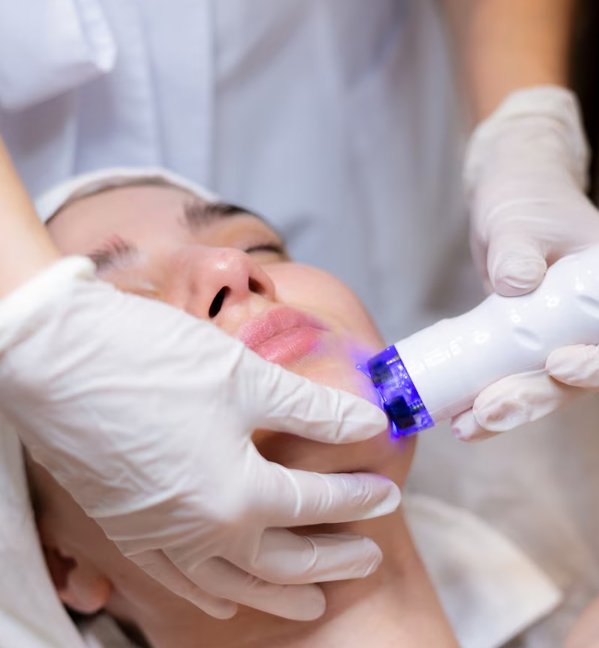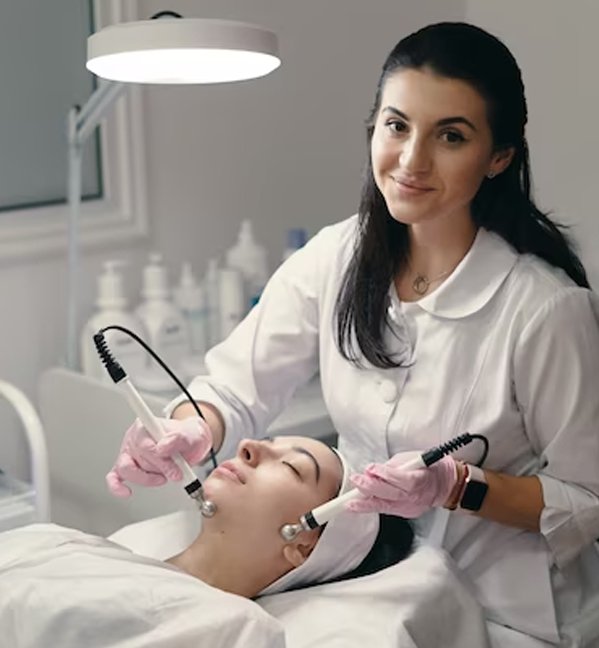Our Services
Laser Skin Resurfacing

Laser Skin Resurfacing In Delhi
Laser Skin Resurfacing, often referred to as Laser Toning, enhances skin texture and appearance. It works by directing a laser beam at the skin’s outer layers while simultaneously heating the deeper dermal layers. This process encourages the formation of new collagen, progressively refining the skin’s texture. Ideal for regeneration and addressing diverse skin issues, laser skin resurfacing treatments in Delhi provide an effective solution. This non-invasive technique utilizes laser technology to selectively remove the skin’s damaged outer layers and stimulate collagen production, unveiling smoother, healthier skin underneath.

What are Laser Skin Resurfacing?
Laser skin resurfacing, a cosmetic treatment, leverages laser technology to enhance skin aesthetics. It addresses various skin issues like wrinkles, fine lines, scars, uneven skin tone, and sun damage. This procedure involves the laser’s energy targeting and removing the outer damaged layers of the skin, thereby stimulating collagen production and fostering skin renewal.


Who is an ideal candidate for laser skin resurfacing?
The best candidates for laser skin resurfacing are those with particular skin issues treatable by the procedure. This includes individuals with wrinkles, fine lines, acne scars, sun damage, age spots, or uneven skin texture. Such candidates should be in good health overall and have realistic expectations regarding the treatment’s outcomes.

The procedure of Laser Skin Resurfacing Treatment
The Laser Skin Resurfacing Treatment involves these steps:
- Consultation: Starts with an expert dermatologist assessing skin conditions and discussing goals to choose the right laser technique.
- Preparation: The skin is cleansed, makeup removed, and numbing cream applied for comfort.
- Laser Treatment: Precision-calibrated laser targets areas, removing damaged layers and stimulating collagen, with treatment duration varying based on area size and condition.
- Cooling: Post-laser, cooling methods are used to soothe the skin and mitigate side effects.
- Post-treatment Care: Protective ointment is applied, and the dermatologist advises on care, including product use and sun exposure limitations.


What can be anticipated during and after the procedure?
During the laser skin resurfacing process, patients might feel warmth and slight discomfort. To alleviate this, the dermatologist may use numbing cream or cooling methods. Post-procedure, the skin can show redness, swelling, and sensitivity. Adhering to the dermatologist’s aftercare guidelines is crucial for healing and reducing potential complications.

Benefits of Laser Skin Resurfacing Treatment
Laser skin resurfacing provides numerous advantages:
- Decreases wrinkles and fine lines.
- Enhances skin texture and tone.
- Reduces acne scars and other scar types.
- Lightens pigmentation irregularities.
- Achieves smoother, younger-looking skin.
- Stimulates collagen production for sustained improvements.


Risks & Side Effects of Laser Skin Resurfacing Treatment
Although laser skin resurfacing is typically safe, it’s important to be aware of possible risks and side effects:
- Short-term redness, swelling, and discomfort.
- Itching, dryness, or peeling in the treated area.
- Heightened sun sensitivity.
- Uncommon occurrences of infection or scarring.
- Pigmentation changes, including darkening or lightening of the skin.
Types of Laser Skin Resurfacing
There are various types of chemical peels available, each offering specific benefits:
Ablative Laser Resurfacing
This method involves using a powerful laser beam to precisely remove the skin’s outer layers. It’s particularly effective for addressing deep wrinkles, scars, and sun damage. Compared to non-ablative techniques, this approach typically requires a more extended recovery period.
Non-Ablative Laser Resurfacing
This procedure focuses on the deeper skin layers while leaving the outer layers intact. It boosts collagen production, enhancing skin texture. Non-ablative laser resurfacing is less invasive, offering a shorter recovery time compared to more intensive methods.
Fractional Laser Resurfacing
This approach treats selective skin areas while leaving tiny patches of skin untouched. This pattern aids in quicker healing and lowers the likelihood of complications, as it allows the untreated skin to aid in the recovery of treated areas.
CO2 Laser Resurfacing
This technique employs a potent carbon dioxide laser to precisely eliminate layers of damaged skin. It’s particularly adept at addressing wrinkles, scars, and uneven skin texture. While CO2 laser resurfacing delivers substantial improvements, it necessitates a longer recovery time compared to other methods.
